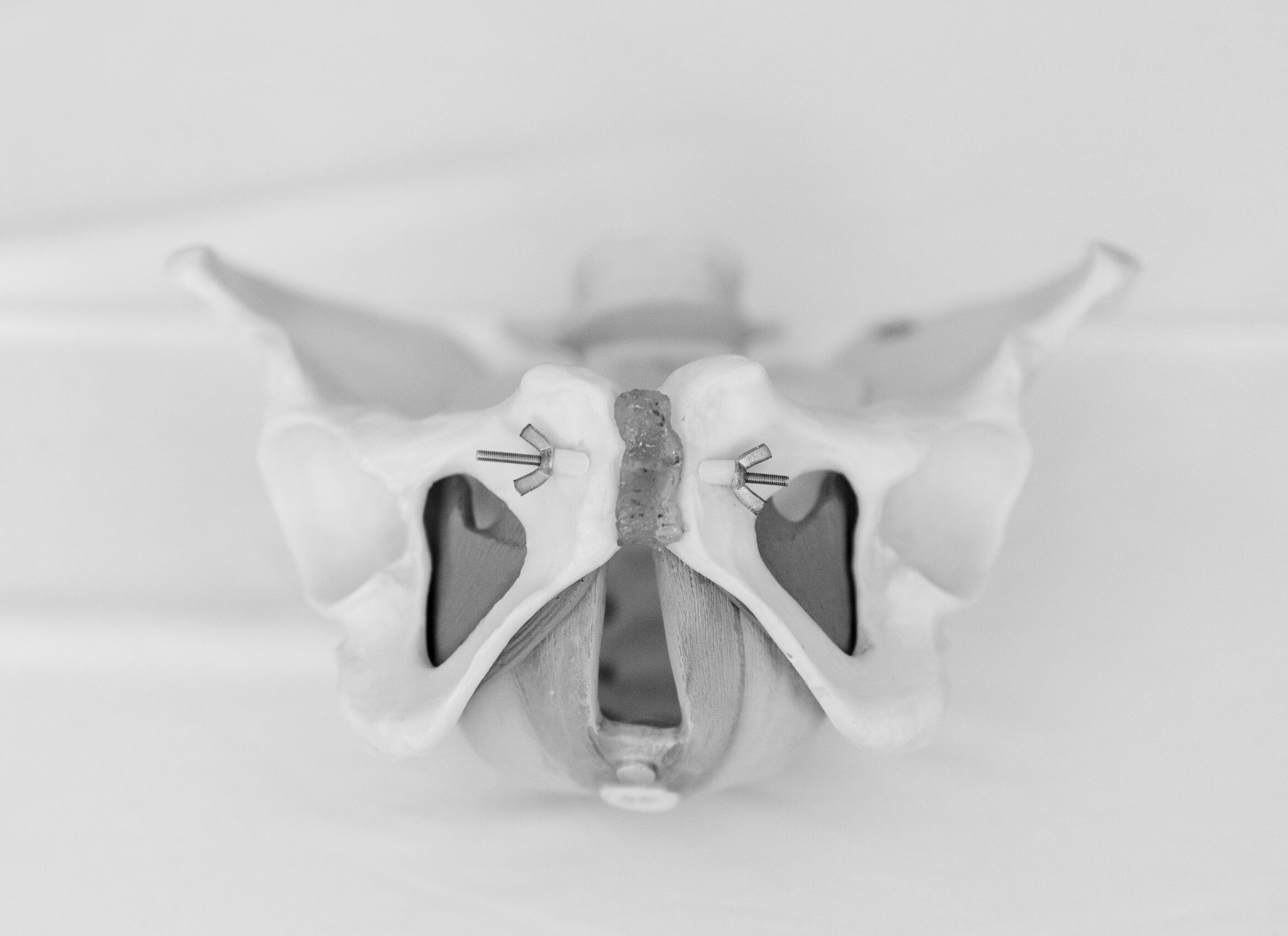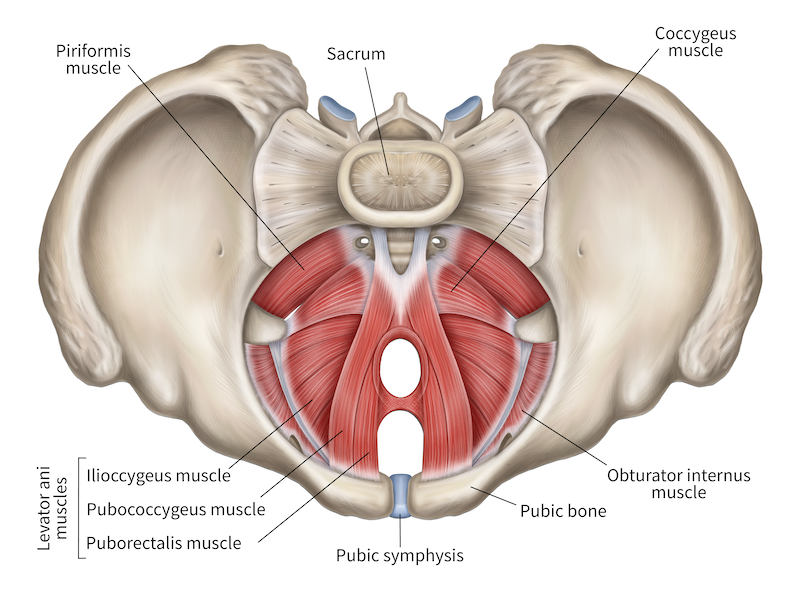Let’s talk about something that doesn’t get enough airtime: the pelvic muscle tear. Yeah, you heard that right. While we’re all familiar with perineal tearing (tearing near the vaginal entrance) and diastasis recti (as a reminder, this isn’t a tear — rather the connective tissue between your abdominal muscles is thinned and stretched during pregnancy to create a visible change in the distance between your two six pack muscles), there’s another birth injury that’s flying under the radar — and it’s more common than you might think.
It’s called a levator ani avulsion, or a pelvic muscle tear. This can increase your risk of pelvic floor dysfunction, and if left untreated, it can lead to a whole bunch of pelvic floor problems including sexual dysfunction, bowel and bladder leakage, and pelvic organ prolapse. Most importantly, pelvic muscle tears can take a huge toll on how you feel about yourself and your quality of life.
The good news is that there is plenty that can be done to help you with this kind of birth injury, including pelvic floor physical therapy. Keep reading to learn about pelvic muscle tears after birth.
What the heck is a pelvic muscle tear?
OK, first let’s nerd out a bit on the anatomy. During a vaginal birth, your uterus pushes your baby down and out of your vagina (aka the birth canal). There’s an extremely important set of muscles that surround and support your vagina, as well as your uterus, bladder, and bowel. These muscles are known as the levator ani muscles — the deep muscles of your pelvic floor which include the puborectalis, the pubococcygeus, and the iliococcygeus. Also, these muscles, along with other groin muscles, play a crucial role in supporting your low back and pelvis and allowing you to move your leg comfortably.
During childbirth, your pelvic floor muscles stretch like crazy to let your baby pass through. We’re talking more than three times their normal length.1 And honestly, that’s way more than your muscles are supposed to stretch. Sometimes, this superhuman feat results in these muscles actually tearing away from the bone (like your pubic bone). Ouch, right?
These sneaky injuries, also known as pelvic floor avulsions, most often happen in the levator ani muscles. While each of your levator ani muscles are at risk for tearing, research shows that the pubococcygeus muscle stretches the most, and is the muscle that tears the most often.2
How does this happen and who’s at risk?
Up to 35% of people (nearly 1 in 3 birthing people) who have a vaginal delivery experience a pelvic muscle tear.2 That feels like a lot. The biggest risk factor? Forceps delivery. But there are other things that can increase your chances:3
- A sunny-side-up baby (occiput posterior position)
- A large head circumference (bigger and 35.5 cm)4
- Vacuum-assisted delivery
- Increased maternal age
- A long pushing stage
- Having an obstetric anal sphincter injury (which is a perineal tear that extends all of the way into your anal sphincter).
What does a pelvic muscle tear feel like?
Since the muscle tears, you may expect to feel pain because of it. But a lot of the pain you may have, can get “lost in the sauce” after a vaginal delivery. Everything down there kind of feels sore and torn up for the first several days. After you recover, spotting these tears early can be tricky. But here are some things you can watch for:
- Feeling like your insides are falling out (especially at the end of the day or after exercise)
- Sex feels different or uninteresting, or you have new trouble reaching orgasm
- Feeling “loose” down there
- Bowel or bladder leakage that isn’t easing up after delivery
While these things don’t certainly mean you have a tear in the muscles of your pelvic floor, they are signs of pelvic floor injuries. If you’re experiencing any of these symptoms, it’s time to chat with your doc or a pelvic floor physical therapist.
Help! My pelvic muscle tear went undiagnosed!
Don’t panic. Even if your tear went unnoticed for a while, there’s still hope. First, 50% of women who had a pelvic muscle tear will heal spontaneously — no action needed.2 But in the other 50%, untreated tears can lead to issues like urinary incontinence, pelvic organ prolapse, and pain during sex.
Treatment options can change depending on the details of your tear. But here’s the good news: pelvic floor physical therapy can usually help!
A pelvic PT can:
- Assess your remaining muscle strength and control
- Check how well you’re managing stress on your pelvic floor, and teach you strategies to manage this pressure better during any and all of your daily activities — including exercise.
- Teach you how to properly contract your pelvic floor muscles
- Show you how to safely exercise without further injury
- Check in on the position of your pelvic organs
- Determining if you may benefit from an external supportive device like a pessary
Tips to manage pelvic floor problems
While you’re working with your PT, here are some strategies to help manage pelvic floor issues:
- Use a squatty potty for easier bowel movements
- Avoid straining on the toilet
- Stop “just in case” peeing
- Breathe out and engage your pelvic floor during exertion (like lifting or sneezing)
- Balance high-impact activities with gentler exercises
- Modify activities that cause pelvic pressure or pain
Don’t suffer in silence
If you’re dealing with pelvic floor problems after childbirth, don’t just grin and bear it. Reach out to your OBGYN or a pelvic floor physical therapist for help. You deserve to feel comfortable in your body!
Want to take control of your pelvic health? Check out our comprehensive Childbirth Recovery Program in the V-Hive. It’s packed with safe, effective exercises designed specifically for healing postpartum bodies, created by a physical therapist who knows her stuff.
By joining the V-Hive, you’ll get expert guidance and support to keep your whole body strong and healthy throughout pregnancy and beyond. Don’t let pelvic floor issues hold you back — take charge of your pregnancy wellness today with the V-Hive!
Remember, a healthy pelvic floor means better bladder control, improve pelvic organ support, and even better sex. So don’t wait – start strengthening those muscles now and give your vag the TLC it deserves!
References:
- Mostafavi, B. (2024). Pelvic floor injury during vaginal birth is life-altering and preventable, experts say. Michigan Medicine.
- Doxford-Hook, E., et al. (2023). Management of levator ani avulsion: a systematic review and narrative synthesis. Arch Gynecol Obstet.
- Wong, K., et al. (2024). Obstetric risk factors for levator ani muscle avulsion: A systematic review and meta-analysis. European Journal of Obstetrics & Gynecology and Reproductive Biology.
- Valsky, D., et al. (2009). Fetal head circumference and length of second stage of labor are risk factors for levator ani muscle injury, diagnosed by 3-dimensional transperineal ultrasound in primiparous women. American Journal of Obstetrics & Gynecology.





